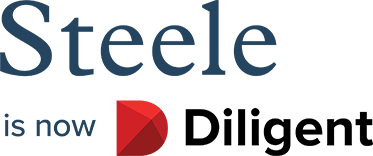Glossary of Key Terms
A Guide to the Key lingo of Compliance Communications
|
Adult.Learning
|
A set of assumptions about how adults learn. Adults may be intrinsically or extrinsically motivated, but compliance training often puts them in the latter category. They tend to be goal oriented and seek relevant, practical examples. |
| Audience Size |
The total number of employees – with or without computers – with whom a compliance team must communicate. Manufacturing/Warehouse/Field employees may face risks that are different than those who sit at computers, but they still require compliance communications. |
| Behavior Change |
Changing behavior is ultimately about getting leverage on an individual so that he or she associates more pleasure with the desired behavior and more pain with the route of non-compliance. When we really believe that compliant behavior will bring us pleasure and comfort and non-compliant behavior brings pain, behavior change can be almost instantaneous. (See our whitepaper Using Behavior Change Science to Dramatically Increase the Effectiveness of Your Compliance Program) |
| Commitments |
There is remarkable evidence that once an individual makes some small commitments, it then becomes difficult for him or her to act in ways that are incongruous with those commitments – and in fact they will start to make larger commitments that are consistent with the smaller ones. Start your behavior change initiative by have employees make small, simple commitment to ethical and compliant behavior. |
| Compliance Communications Plan |
An annual plan (or a series of quarterly plans) that clearly identifies the compliance topics to be communicated, the formats in which they will be communicated, and the channels through which those formats will be published. A sustainable, practical plan is *essential* for a successful approach to communications. |
| Force Multiplier |
A force multiplier refers to a factor that dramatically increases (hence "multiplies") the effectiveness of an item or group. Some common force multipliers are: Morale. Technology. |
| High Bandwidth Communications |
Communications that tend to be long, cognitively challenging, and time consuming. This is not a bad thing per se (consider your annual Code of Conduct e-learning module), but when compliance communications consist only of such programs – or long, dense memos, policies, etc. – retention of information and negative attitudes among learners will result. High bandwidth communications are associated with Cognitive Overload. |
| High Frequency Communications |
Frequency of exposure is much more important to information retention and positive attitudes about the information than duration. High frequency, low bandwidth approaches are proven to be much better tools than low frequency, high bandwidth compliance communications. |
|
Low Bandwidth Communications |
Communications that require limited cognitive focus over short periods of time and are easy to understand. |
| Low Frequency Communications |
Lower, less effective quantities of what are usually lengthier and more extensive training experiences. |
| Multi-Channel Communication |
Your company already communicates through a variety of channels – email, intranet sites, a Learning Management System, company publications, staff meetings, etc. An effective communication program leverages a variety of these channels to connect with people from multiple angles. |
| Multi-Media Libraries |
The Steele Compliance Wave Libraries, hosting 4,000+ downloadable resources in 22 different communication formats, covering 100+ compliance topics. |
| Multi-Modal Communication |
Communication on a topic that comes in many different forms – think videos, articles in a newsletter, manager’s meetings with staff, etc. People learn in different ways and no single communication style works for everyone. Also, multi-modal approaches to communication make it easy to repeat messages several times but have them continue to appear fresh. |
| Pattern Interrupt |
Much of human behavior is the playing out of patterns of conditioned responses. When we interrupt those patterns – with something interesting, thought provoking, amusing, etc. – we can start to create new patterns. Behavior change is hardly possible until we first disrupt the current patterns and get leverage on the individual. |
| Risk-Based Communications |
Communications directed at specific audiences based on a reasonable assessment of the compliance risk associated with that audience. This is contrasted with a blanket approach to communication in which everyone gets the same training or other information regardless of risk profile, which often is an important cause of training fatigue. |
| SCORM |
Acronym for the Sharable Content Object Reference Model. SCORM is a commonly used standard that allows material to be compatible with and shared across learning systems. If you have an LMS, chances are your organization is taking advantage of SCORM. |
| Seat Time & Cost |
The often overlooked expense - including time and money - incurred by training programs that take employees away from other productive activities. The average company with 5,000 employees spends over $1.2 million annually providing workers with lengthy, low-frequency e-learning sessions! That does not include the money paid by the Compliance Office to produce and deliver such content. (See our Value Document) |
| Social Proof |
The idea that if I see people I respect – or whom I think are like myself – acting in a particular way, I am much more likely to act like them. When correct behaviors are modeled by individuals meeting these criteria, behavior change can be easy to achieve. |
| Training Fatigue |
The feeling among employees that they receive too much training that is not relevant to their work and that is not appropriately matched to the risks they face. In most cases, Compliance Training is competing with many other kinds of training employees receive, and must be carefully considered in that context. |
Did you Know?
All of our 4,000+ resources endure an ongoing review process...
- Curation is led by a team of industry experts and knowledge leaders
- No resource remains stagnant for more than 2.5 years
- Policies & Laws are reviewed for relevance, validity, and applicability
- If resources do not pass the review process, they are permanently retired from the Libraries
Our Libraries are constantly being replenished and expanded...

